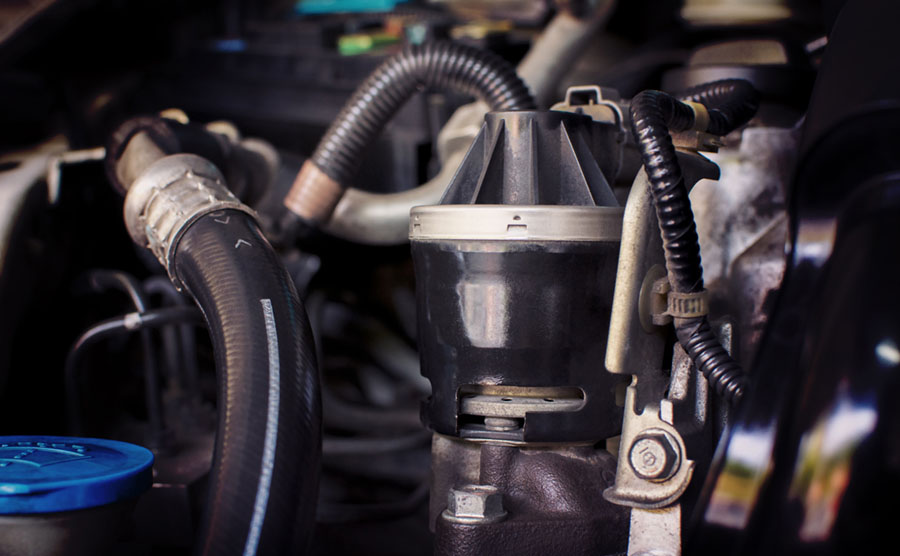Since the early 1970s, some form of exhaust gas recirculation (EGR) system has been used to reduce harmful exhaust emissions in vehicles sold in North America.
These EGR systems range from earlier versions that were operated simply by using ported engine vacuum to more modern designs which utilize linear (electronically controlled) EGR valves. The EGR valve is the central part of any EGR system but not always the culprit when a malfunction occurs.
The primary advantage of these EGR systems (as they pertain to gasoline and diesel engines) is the reduction of nitrogen oxide (NOx) ions from spent exhaust gases. When the EGR valve is activated (opened) a bridge is created between the exhaust manifold and the intake manifold. This “bridge” between the intake and exhaust systems occurs in a wide variety of ways and can be the subject of a much longer and more extensive article.
Since NOx is formed when extreme cylinder temperatures cause oxygen and nitrogen to combine, the substitution of inert exhaust gases (CO2) for a portion of the oxygen (O2) in the cylinders creates a reduction in NOx production. Recirculating this small portion of exhaust gases back through the intake manifold may also provide other benefits in addition to NOx reduction.
One of the additional benefits of the modern EGR system involves maintaining internal engine (cylinder and/or combustion chamber) air temperature. Thermal dynamics play a critical role in the atomization of fuel in gasoline and diesel engines. For this reason, internal engine temperatures must be carefully and precisely manipulated. Modern EGR systems are designed with this in mind.
Hot exhaust gases are frequently manipulated in order to elevate intake air temperature when the engine is cold. This is possible because exhaust gases elevate in temperature much faster than intake air.
As the engine warms to normal operating temperature and intake air becomes less dense, replacing some of the oxygen-rich air in the engine’s cylinders with inert CO2 (from the EGR exhaust) may result in a reduction in cylinder temperature and optimized fuel atomization. This means increased fuel mileage and better throttle response in certain applications and under specific driving conditions.
EGR systems in diesel applications frequently use an EGR cooler to reduce the temperature of EGR gases in an effort to affect internal engine temperatures. EGR coolers are typically of the air-to-water variety and have engine coolant flowing through their cores. Cooling the EGR gases before they are re-introduced into the engine induction system allows them to be used to more dramatically manipulate internal cylinder temperature.
The EGR system may help to realize a desired internal engine air temperature to reduce NOx, but there is another benefit. The reduction in internal engine temperature has also been associated with increased engine longevity. Valves, particularly exhaust valves, are susceptible to stress from the drastic temperature variations and the load which they must endure. Exhaust and intake valve failure relates directly to engine failure because the pistons, connecting rods, and cylinder walls are often damaged when valve failure occurs. Keeping the valves cooler may also help them last longer and remain in their proper position.
In summary, modern EGR systems are beneficial for the reduction of harmful NOx emissions, improved throttle response (especially in vehicles equipped with high-voltage ignition systems), and increased engine longevity, particularly in diesel engines.

